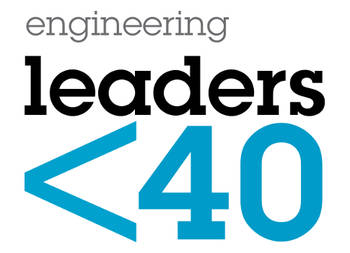The human resources function has, for a number of reasons, been typically viewed by executives as peripheral to the successful performance of their organizations. Human resource management as a course in most MBA programs is often not considered as useful as offerings in finance, marketing, or information technology.
The human resources function has, for a number of reasons, been typically viewed by executives as peripheral to the successful performance of their organizations. Human resource management as a course in most MBA programs is often not considered as useful as offerings in finance, marketing, or information technology. Yet, managers with full-time work experience report that their major challenges involve people. It is vital that the HR function embrace a role that more directly impacts on organizational effectiveness.
Researchers draw three broad conclusions:
The foundation of a value-added HR function is a business strategy that relies on people as a source of competitive advantage and a management culture that embraces that belief;
A value-added HR function will be characterized by operational excellence, a focus on client service for individual employees and managers, and delivery of these services at the lowest possible cost; and
A value-added HR function requires HR managers who understand the human capital implications of business problems and can access or modify the HR system to solve those problems.
A survey of U.S. businesses showed that only 16% had at least one innovative practice in each of four major human resource manager policy areas (flexible job design, worker training, pay-for-performance compensation, and employment security). A study of 3,300 U.S. workplaces concluded that the use of high performance work systems was relatively rare. About one-third had tried a formal Total Quality Management program, and about one quarter used benchmarking programs to compare their practices and performance with other organizations. The fact that it is difficult to specify the particular HRM practice that contributed to enhanced firm performance may be one more reason for the lack of diffusion.
Although the use of best HRM practices has increased, only a minority of firms use them. And, somewhat surprisingly, successful HRM practices are not necessarily the ones adopted; instead firms often opt for those easiest to adopt. Practices adopted sometimes fail and more often are discontinued. Implementing such programs is difficult. Implementation needs to be monitored and approached in a planned and comprehensive way.
Barriers to success
Four internal barriers are noted. First, CEOs touted as heroes are often those who succeed in the short term by destroying the human system rather than achieving long-term competitive advantage through people. Second, unproductive theories of human behavior in the workplace are endorsed. Employment relationships are couched in economic transaction terms rather than in human and social terms.
Third, organizations use language that diminishes trust, cooperation and self-management. Fourth, managers are resistant to and cynical about the implementation of new HRM practices because of the past history of management practices in their companies (deskilling, fighting unions, management control).
There are also other internal sources of resistant to implementing HRM practices. These include:
the loss of jobs, status and pay through the removal of hierarchy,
the costs, benefits and uncertainty of change,
inadequate measures of the benefits of change,
hiring managers from outside who do not understand ways to obtain competitive advantage through people in their new companies.
Organizations desire to do what everyone else is doing and to follow the crowd — the problem is that the conventional wisdom is incorrect. There are managerial career pressures, derived from the need to “make the numbers” and to have a track record that makes one “mobile”, pressures that create an emphasis on short-term financial results. There is a persuasive belief in leadership and a tendency to overvalue things we have helped produce, making delegation difficult.
There exist demands for accountability and reproducibility in results and decisions that destroy the benefit of expertise, which is inevitably dependent on tacit knowledge. Career trajectories all too often reward financial results rather than human resource or people management. There is an excessive focus on measuring short-term costs and neglecting to assess the returns of those costs and investments.
The business press and management education touts “mean” or “tough” management. There exists a management education and training focus on finance and accounting rather than on human resources or organizational behavior. There is a greater normative and economic value placed on being a skilled analyst, on knowing, compared to the value placed on being able to manage people, on doing. Finally, the capital market primacy over other stakeholders and demands for short-term performance make long-term investments in people more difficult.
Change may be coming
We may be on the threshold of a renaissance in the application of HRM knowledge and best practices. Organizations may have no choice given the critical importance of dealing with the increased level of global competition and pace of change. (In addition, a lot of threads are coming together (TQM, re-engineering, learning, core competences) to give higher priority to HRM. Consider the following conclusions which we believe to be valid.
Human capital has become the key to competitive advantage.
The traditional relationship between people and organizations has been shattered; a new relationship is needed.
We now know a lot about individual competence and development and organizational effectiveness.
We now know a lot more about changing organizations to deliver “best practices”.
There is an urgent need to create peak performing organizations and we know how to do that.
To the extent that organizations can unleash the hidden value in their people, they will increase their chances of success, particularly as knowledge and intellectual capital become more important. Some companies have achieved high levels of performance over a long period of time.
Why are these companies successful? The accumulating research evidence has identified powerful reasons that are applicable to almost all organizations. Employee commitment and motivation come from involvement and from the ways that people are treated. Organizations have found that giving people a stake and say in what they do is important in building high levels of commitment.
It is possible to use the ideas, thoughts, and wisdom of the people who do the work everyday to help the organization become more productive and efficient. This requires leaders of organizations to have the courage to put people first if they are to successfully meet these challenges.
This is an excerpt from the new book, The Human Resources Revolution: Why Putting People First Matters, edited by Ronald J. Burke of the Schulich School of Business, York University, Canada, and Cary L. Cooper, Lancaster University Management School, United Kingdom. The book is published by Elsevier. More information about the book can be found at www.elsevier.com .



